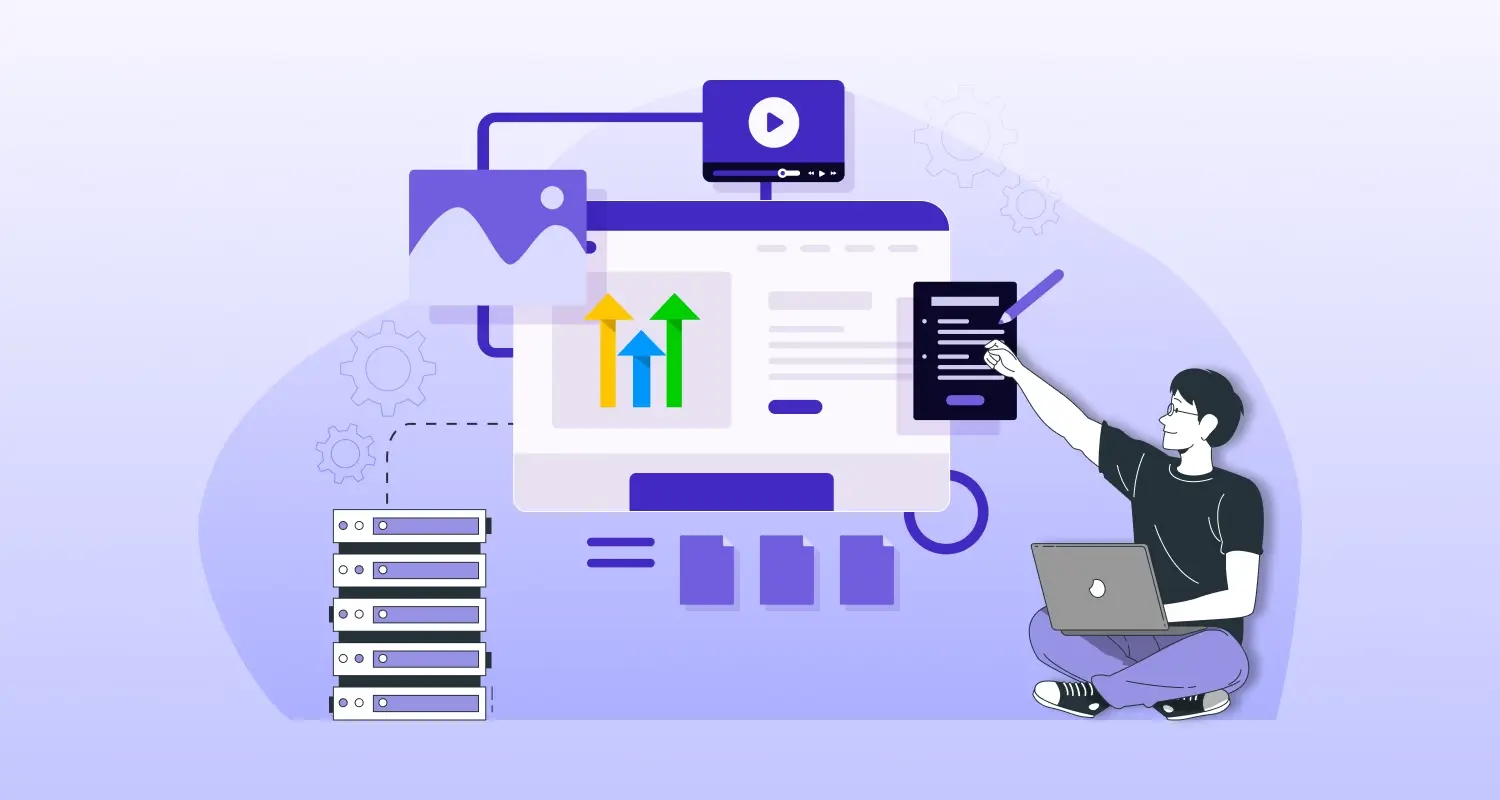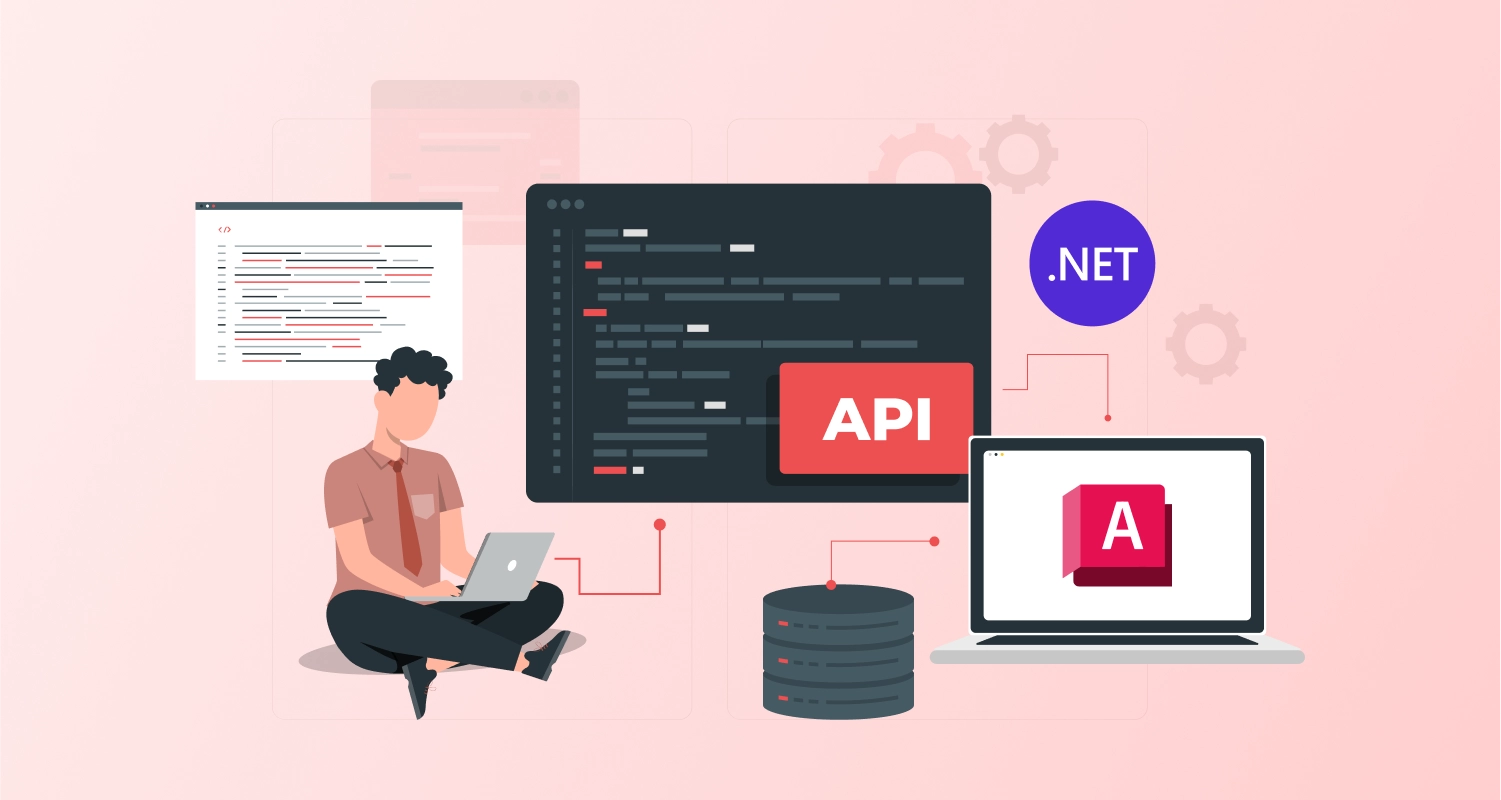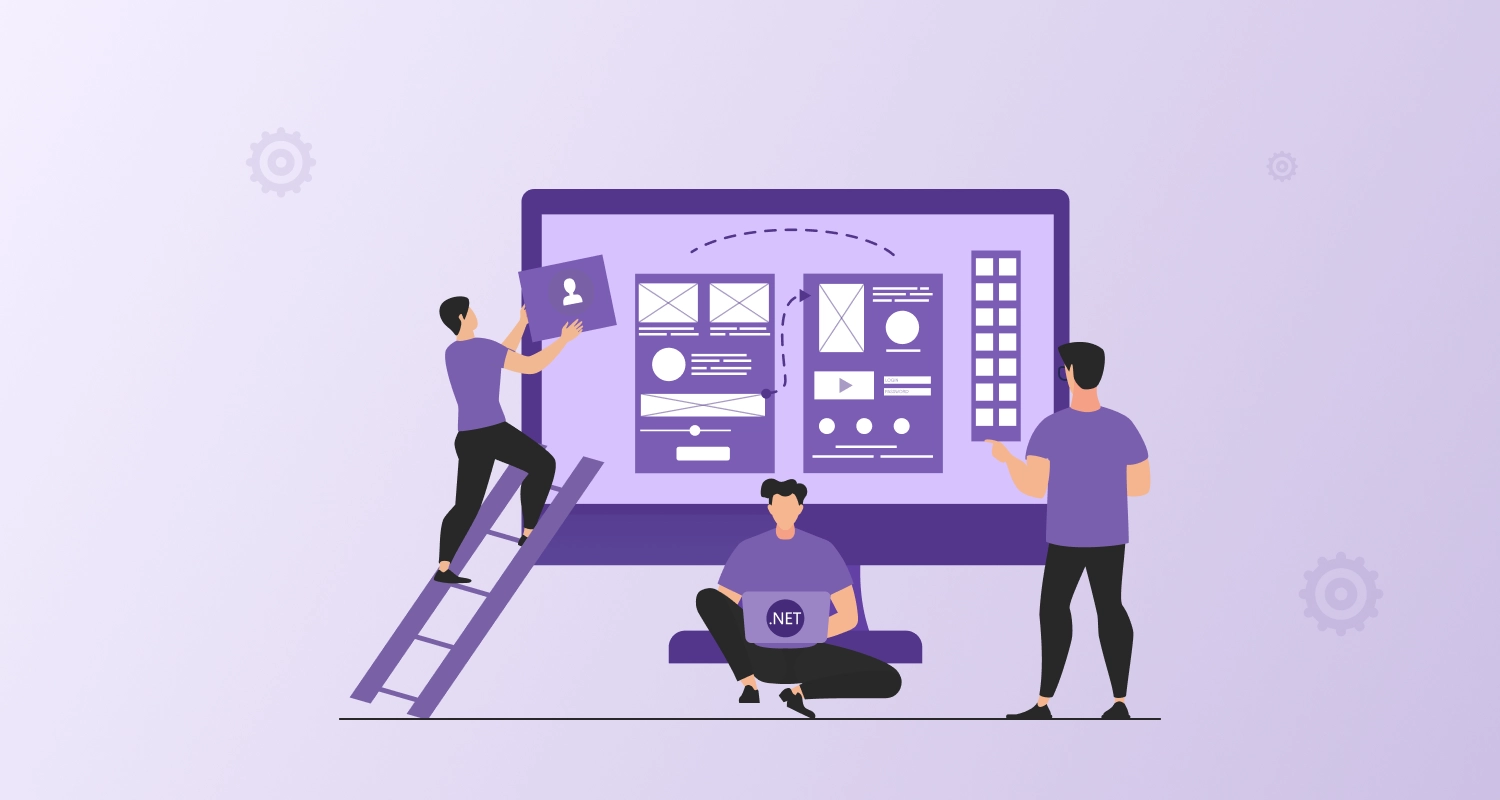In the current business landscape, the two-sided marketplace has emerged as a popular business model that connects two distinct groups of users – buyers and sellers – and facilitates transactions between them. This type of platform benefits both the buyers and the sellers, offering a seamless user experience, access to a wider range of products and services, and increased competition that keeps prices low. For business owners, a two-sided marketplace can be a lucrative venture, providing a steady stream of revenue from transaction fees.
However, building a successful two-sided marketplace requires careful planning and execution, as well as a deep understanding of the user roles and motivations involved. In this article, we will discuss how to build a successful two-sided marketplace, including identifying your niche, understanding user roles, launching an MVP, and incorporating key features for customers, vendors, and admins.
What Is a Two-Sided Market?
A two-sided market is a type of marketplace that brings together two distinct groups of users – buyers and sellers – and facilitates transactions between them. This type of market differs from a traditional market where buyers and sellers interact directly with each other. Instead, the two-sided market acts as a platform that connects buyers and sellers and earns revenue by taking a percentage of each transaction made on the platform.
Two-Sided Marketplace Business Model in Picture:
In a two-sided marketplace, the platform owner acts as a mediator between buyers and sellers. The platform provides a seamless user experience, a wide range of products and services, and ensures trust and credibility in the transactions. The business model is a win-win for all parties involved. The customers get access to a wide range of products and services from different vendors at competitive prices, the vendors get access to a larger audience and exposure for their products and services, and the platform owner earns revenue by taking a percentage of each transaction made on the platform.
Customer’s Goodies:
Customers benefit from two-sided marketplaces in many ways. They get access to a wider range of products and services at competitive prices. They can compare prices, read reviews, and choose the best deals. Additionally, 2 sided marketplace provides a seamless user experience, where customers can easily find what they’re looking for and complete their transactions.
Vendors’ Goodies:
Vendors benefit from a two-way marketplace by gaining access to a larger audience and exposure for their products and services. They don’t have to worry about building their own website or attracting customers since the platform does that for them. Vendors also benefit from the credibility and trust associated with the platform, which can lead to more sales and revenue.
Owner’s Goodies:
The platform owner benefits from the two-sided marketplace by taking a percentage of each transaction made on the platform. Additionally, they can collect data on user behavior and preferences, which can be used to improve the platform and increase revenue.
How to Build a Two-Sided Marketplace?
Creating a two-sided marketplace is an excellent method of linking buyers and sellers in a particular region. Thanks to the emergence of on-demand app development and the two-sided marketplace business approach, creating a platform that benefits both parties is now simpler than ever. Nevertheless, to guarantee the prosperity of your marketplace, you must follow specific procedures.
1. Specify Your Area:
The first step in building a two-sided marketplace is to specify the area that you want to focus on. This could be anything from a particular product category to a specific service or location. Once you have a clear idea of what you want to focus on, you can start thinking about the user roles that will be involved in your marketplace.
2. Discover User Roles:
The success of your marketplace will depend on your ability to attract both buyers and sellers. Therefore, you need to spend some time thinking about the user roles that will be involved in your platform. This could include identifying your target audience, their needs, and pain points, as well as any challenges that they may face when using your platform. Once you have a clear idea of the user roles, you can start thinking about the features and functionality that you will need to include in your marketplace.
3. Start with an MVP:
One of the most important things to keep in mind when building a two-sided marketplace is to start with a minimum viable product (MVP). This means building a basic version of your platform that includes only the essential features and functionality. By starting with an MVP, you can test your marketplace with a small group of users and gather feedback that will help you improve the platform over time.
4. Prepare for Modifications:
Building a two-sided marketplace is a process of constant iteration and improvement. Therefore, it is important to be prepared for modifications and changes to your platform as you gather user feedback. This could include adding new features, improving the user experience, or changing the way that buyers and sellers interact with each other.
5. Do not Neglect Communication:
Finally, it is important to communicate effectively with both buyers and sellers in your marketplace. This could include providing clear instructions on how to use the platform, offering customer support, and facilitating communication between buyers and sellers. By providing clear and effective communication, you can build trust with your users and create a positive user experience that will encourage them to return to your platform in the future.
Features in Building a Two-Sided Marketplace Examples:
When building a two-sided marketplace, there are several key features that you should consider including in your platform. These features will help you to create a user-friendly platform that provides value to both buyers and sellers. Let’s take a look at some examples of successful two-sided marketplaces and the features that they have incorporated into their platforms.
Uber

Uber is a ride-hailing app that connects drivers with riders. Some of the key features of the Uber app include:
- Geolocation: The app uses GPS technology to identify the location of both drivers and riders.
- Real-time tracking: Both drivers and riders can track the progress of the trip in real time.
- In-app payments: Riders can pay for their trips directly through the app, using a variety of payment methods.
- Driver ratings: Riders can rate their drivers and provide feedback on their experience.
Airbnb

Airbnb is a platform that connects hosts with guests who are looking for unique accommodation options. Some of the key features of the Airbnb platform include:
- Search filters: Guests can search for accommodation based on a variety of criteria, including location, price, and amenities.
- Guest reviews: Hosts are rated by their guests, and these ratings are displayed on their listings.
- In-app payments: Guests can pay for their bookings directly through the app, using a variety of payment methods.
- Host support: Airbnb provides support to hosts throughout the booking process, including assistance with setting prices and managing bookings.
TaskRabbit

TaskRabbit is a platform that connects people who need help with tasks (such as cleaning, handyman services, or errands) with local service providers. Some of the key features of the TaskRabbit platform include:
- Task posting: Users can post a description of the task that they need help with, along with their location and budget.
- Service provider searches: Service providers can search for tasks in their area and bid on them.
- In-app payments: Users can pay for their tasks directly through the app, using a variety of payment methods.
- Task completion confirmation: Once a task is complete, both the user and service provider can confirm that the task has been completed successfully.
When building your two-sided marketplace, it is important to work with a development team that understands the specific needs of your platform. Whether you are build a NFT marketplace or a multi-sided platform business model, your team should be able to help you create a platform that meets the needs of both buyers and sellers. By incorporating key features like geolocation, real-time tracking, and in-app payments, you can create a platform that is both user-friendly and effective.
Develop a Two-Sided Marketplace Platform with Trusted CMARIX Partner
Developing a two-sided marketplace platform can be a complex process, but working with a trusted partner like CMARIX, a mobile app development company, can help to ensure that your platform is effective and user-friendly. Let’s take a look at some of the key features that you should consider when developing a two-sided marketplace platform for customers, vendors, and admins.
Features for Customers:
- User-friendly interface: The platform should be easy to navigate, with clear and concise instructions for users.
- Advanced search options: Customers should be able to search for vendors or products using a variety of search criteria, including location, price range, and product features.
- Secure payments: Customers should be able to make payments easily and securely through the platform, using a variety of payment options.
- Detailed vendor profiles: Customers should be able to view detailed profiles of vendors, including their contact information, reviews, and ratings.
- Customer support: The platform should provide customer support to users, including the ability to contact support staff and resolve any issues that arise.

Features for Vendors:
- Easy registration: Vendors should be able to register easily and quickly on the platform, with minimal paperwork or administrative tasks.
- Profile management: Vendors should be able to manage their profiles easily, including updating their contact information, product listings, and pricing.
- Sales tracking: Vendors should be able to track their sales and revenue through the platform, with detailed reports and analytics.
- Order management: Vendors should be able to manage their orders easily, including tracking order status, updating order information, and communicating with customers.
- Marketing tools: The platform should provide vendors with marketing tools to promote their products, including email marketing, social media integration, and targeted advertising.
Key Features for Admins:
- User management: Admins should be able to manage users and user data, including registration, login, and authentication.
- Vendor management: Admins should be able to manage vendors and vendor data, including product listings, pricing, and order information.
- Payment management: Admins should be able to manage payments and financial data, including payment processing, refunds, and chargebacks.
- Analytics and reporting: Admins should be able to access detailed analytics and reporting tools, including sales data, customer data, and vendor data.
- Platform security: Admins should be able to manage platform security, including data encryption, user authentication, and access control.
Some examples of successful two-sided marketplaces include Airbnb, Uber, and Taskrabbit, which all use a two-sided marketplace business model or a multi-sided platform business model. By creating a two-sided marketplace platform that provides value to buyers and sellers, you can create a sustainable and profitable business that can scale over time.
You may like this: How to Find Investors for Your App Startup?
Conclusion
In conclusion, building a successful two-sided marketplace requires careful planning and execution. A two-sided marketplace is a complex ecosystem that involves multiple user roles, each with its own needs and motivations. By understanding these roles and their needs, you can build a platform that provides value to all parties involved. The multi-sided platform business model has become increasingly popular in recent years, with examples like Uber, Airbnb, and TaskRabbit paving the way. As more businesses look to capitalize on the benefits of a two-sided marketplace, it’s important to remember the key features that are essential to success, such as user registration and login, search and filtering options, payment processing and transaction management, and communication tools. By partnering with a trusted software development company like CMARIX, you can ensure that your two-way marketplace is built with the features and functionality necessary for success in today’s two-sided markets.
Frequently Asked Questions
What are the two-sided marketplaces?
Two-sided marketplaces are platforms that connect two distinct user groups, such as buyers and sellers, hosts and guests, or service providers and consumers. They provide a venue for transactions to take place, typically taking a commission or fee for facilitating the exchange.
How to build a two sided marketplace?
To build a successful two-sided marketplace, you need to specify your area, discover user roles, start with an MVP, prepare for modifications, and prioritize communication. Additionally, it’s important to focus on key features like user registration and login, search and filtering options, payment processing, and communication tools to ensure a smooth user experience for both customers and vendors.
Is Amazon a two-sided marketplace?
Yes, Amazon is a two-sided marketplace as it connects buyers and sellers on its platform.
How do you market a two sided marketplace app in the beauty industry?
To promote a two-sided marketplace web app in the beauty industry, you can employ targeted social media advertising and influencer marketing to reach potential buyers and sellers. Furthermore, collaborations with beauty influencers and participation in industry events are excellent Web App Ideas that can help boost brand recognition and drive traffic to the app.


![Building a Two-Sided Marketplace for Your Business [Expert Insights]](https://blog.cdn.cmarix.com/blog/wp-content/themes/cmarixinternal/public/images/no-image.png)




